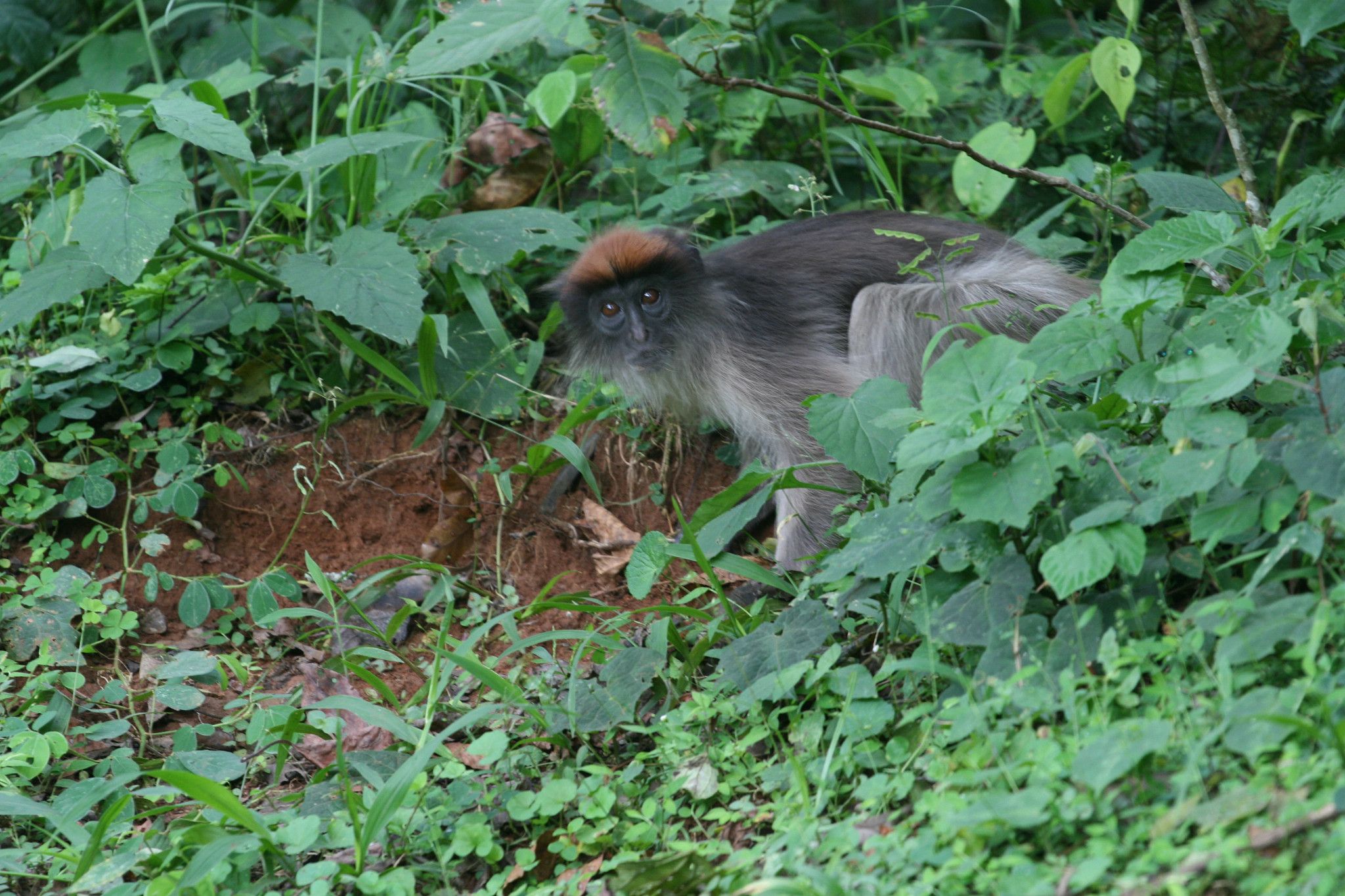


Very little is known about the reproductive cycle of these primates in the wild. Often the dominance hierarchy determines who is allowed mating access, and in the peculiar case of Tana River red colobus monkeys, there is frequently a single male or a small group of males that prohibits extra-group males from mating or even entering the group. The mating system in this species is generally polygynous, especially when only one male is present. A closer estimate may put their mean weight at 5.8 kg, near that of the more isolated West African species of the Procolobus kirki (Oates, 1994). Though no definitive study on mass has been completed, weights may range between 5.1 and 11.3 kg like other red colobus species. The hind limbs are well developed for leaping across the canopy and may be particularly long. This species exhibits several traits that may be adaptations to an arboreal lifestyle, including long, slender digits and the loss of the thumb tubercle, common in all colobine monkeys. The tail is gray and fairly long, measuring 520 mm to 800 mm. Head and body length ranges between 450 and 670 mm. rufomitratus is ruddy black on the dorsal side and red with brown on the chest, inner portions of the limbs and head (Nowak, 1999). In general, the canopy of the Tana River forest is more open than the habitat at other red colobus sites (Oates, 1994). In contrast to the habitat of the other red colobus species across East and Central Africa, this habitat is more arid and has a lower density and diversity of tree flora (Marsh, 1981a). This riverine forest habitat experiences an average annual precipitation of 470 mm and temperatures ranging between 21.4☌ and 33☌ (Medley, 1993). These isolated clumps of forest are under the influence of groundwater fluctuation, river course changes and human disturbance which result in a very fragmented and unstable habitat only further endangered by human encroachment (Decker & Kinnaird, 1992). Piliocolobus rufomitratus, or Tana River red colobus monkey, inhabits patches of evergreen riverine forest that undergo periodic flooding from the Tana River. Its range includes the Tana River National Primate Reserve outside the city of Wenje. The Tana River runs from the eastern Kenyan Highlands into the Indian Ocean. More research is needed to get a more accurate estimate of the remaining population and to better understand the behavior of this species.Piliocolobus rufomitratus is limited to a small range of forest along the lower Tana River in Eastern Kenya. While these conservation groups are integral to the survival of Preuss’s red colobus monkeys, there is no such group solely dedicated to saving the species. The plan’s goal is to unite and mobilize conservation groups, communities, governments, zoos and wildlife centers, and other institutions to help protect red colobuses from extinction. ReCAP is a joint effort of the IUCN/SSC Primate Specialist Group and the African Primatological Society. The Red Colobus Action Plan (ReCAP)-the first action plan to target an entire group of African monkeys-was presented at the 2018 International Primatological Society Congress in Kenya. Their mission is to educate communities about the fragility of ecosystems and the urgent need to conserve the habitats where Preuss’s red colobus monkeys and other wildlife call home. In Cameroon, The Mohamed bin Zayed Species Conservation Fund is working to increase conservation knowledge through rural and urban conservation outreach programming. Since humans are the biggest threat to Preuss’s red colobus monkeys, education is crucial to conservation. DICHOTOMOUS KEY-IDENTIFY TAMARIN AND LEMUR SPECIES.LIFE IN THE WORLD’S TROPICAL RAINFORESTS.THE CASE OF THE DISAPPEARING HABITIT: THE CANDY CULPRIT.ALPHABET SOUP OF CONSERVATION-VIDEO AND INTRODUCTION.10 OF THE MOST ENDANGERED PRIMATE SPECIES.10 PRIMATE SPECIES YOU PROBABLY NEVER HEARD OF.10 OF THE MOST WELL-KNOWN PRIMATE SPECIES.“TRUE LEMURS,” BAMBOO LEMURS, RUFFED LEMURS.BALE MONKEY, GRIVET, MALBROUCK, TANTALUS, GREEN, AND VERVET MONKEYS.


 0 kommentar(er)
0 kommentar(er)
